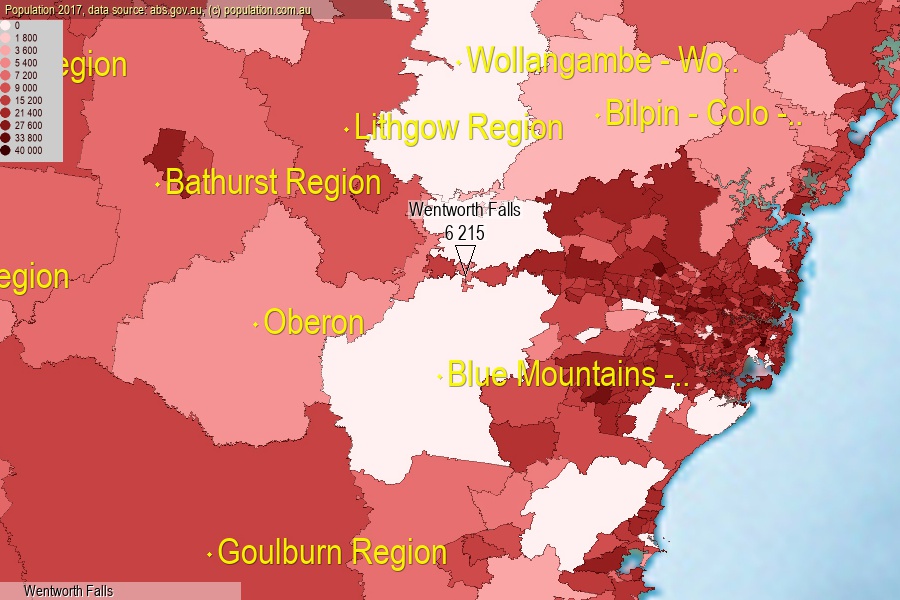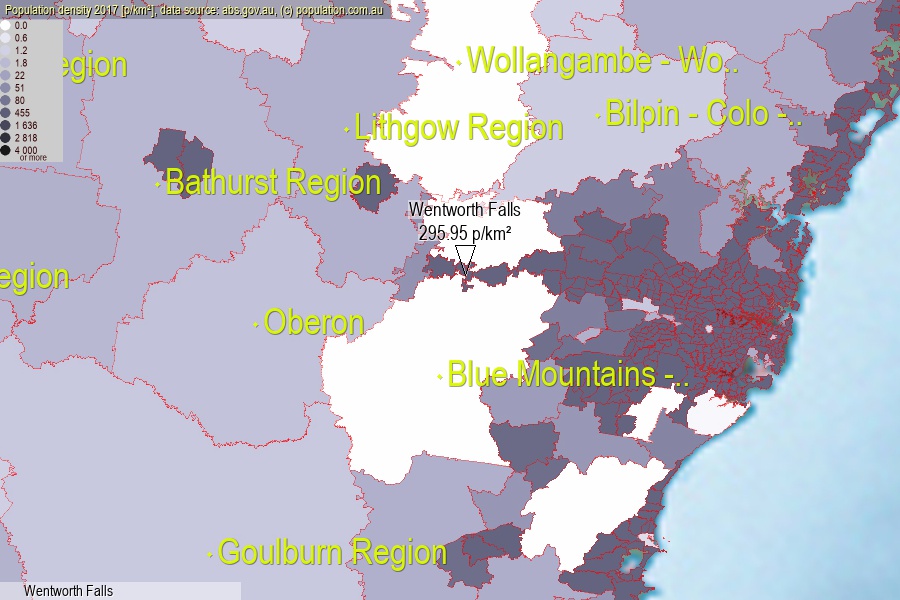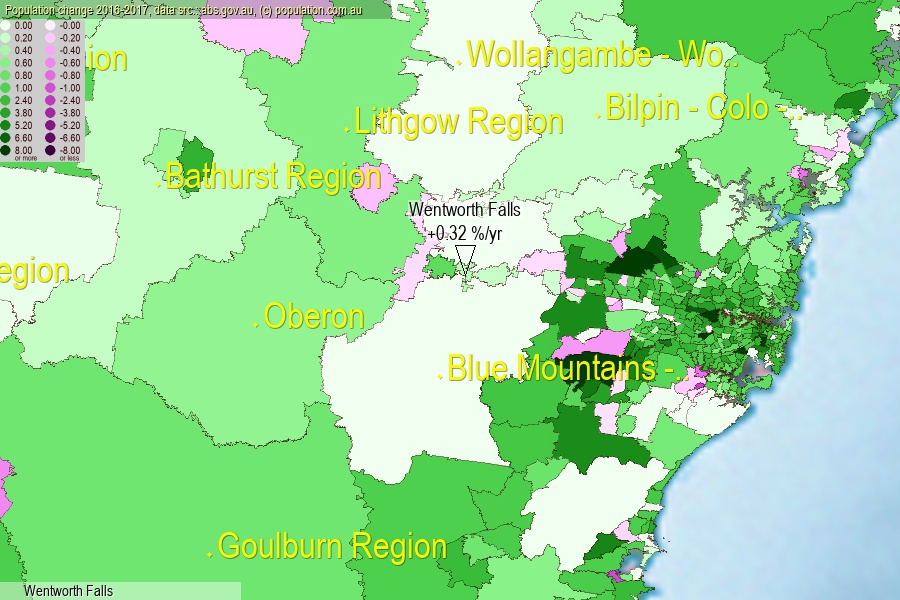 population.com.au
population.com.auLast official estimated population of Wentworth Falls (as Statistical Area Level 2) was 6 215 people (on 2017-06-30)[2]. This was 0.03% of total Australian population and 0.078% of NSW population. Area of Wentworth Falls is 21.00 km², in this year population density was 295.95 p/km² . If population growth rate would be same as in period 2016-2017 (+0.32%/yr), Wentworth Falls population in 2025 would be 6 377. [0]



Click to enlarge. Wentworth Falls is located in the center of the images.
Population [people], population density [p./km²] and population change [%/year] [2]
View borders » (new window) [4]
[1991-1992] +1.04 %/Yr.
[1992-1993] +0.62 %/Yr.
[1993-1994] +0.90 %/Yr.
[1994-1995] +1.09 %/Yr.
[1995-1996] +1.08 %/Yr.
[1996-1997] +0.56 %/Yr.
[1997-1998] +0.34 %/Yr.
[1998-1999] +0.22 %/Yr.
[1999-2000] +0.89 %/Yr.
[2000-2001] +0.89 %/Yr.
[2001-2002] +1.09 %/Yr.
[2002-2003] +0.77 %/Yr.
[2003-2004] -0.02 %/Yr.
[2004-2005] -0.17 %/Yr.
[2005-2006] +0.09 %/Yr.
[2006-2007] +1.78 %/Yr.
[2007-2008] +1.78 %/Yr.
[2008-2009] +1.68 %/Yr.
[2009-2010] +0.51 %/Yr.
[2010-2011] +0.60 %/Yr.
[2011-2012] +0.05 %/Yr.
[2012-2013] +0.49 %/Yr.
[2013-2014] -0.03 %/Yr.
[2014-2015] -0.13 %/Yr.
[2015-2016] +0.11 %/Yr.
[2016-2017] +0.32 %/Yr.
[0] Calculated with linear interpolation from officially estimated population
[1] Read more about SA2 and Australian Statistical Geography Standard (ASGS) on abs.gov.au
[2] Population data from Australian Bureau of Statistics (Population and density: 2017; change: 2016-2017)
[3] Digital Boundaries: Australian Statistical Geography Standard (ASGS) 2016.
[4] Border coordinates are simplifyed using Ramer-Douglas-Peucker algorithm.